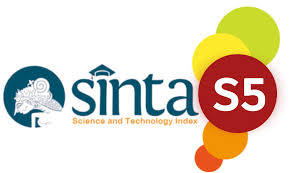International Students' Adjustment Towards Implementing Indonesian Language in Communication
DOI:
https://doi.org/10.37253/iallteach.v6i1.8835Keywords:
BIPA, Communication, Language Adjustment, International StudentAbstract
Adjustment to the Indonesian language is a popular issue for international students while studying abroad in Indonesia. This research aims to analyze the ability as well as displaying the point of view of international students in implementing Indonesian language in communication highlighting what are the confusion and shocks from many aspects that they experienced during adjustment of communicating in Indonesia. As how mankind socializes one another through communication, direct or indirect, language is the tool to support communication between two or more people. In this case, Indonesian language as a communication tool exists among many other languages and globally spread its wings not only as a conversation support between two or more people, but also as a language that is learned by people from various backgrounds through a mandatory program of Indonesian for foreign speakers (BIPA). To communicate, adjustment is highly needed, especially to speak Indonesian language as a foreign language.
Downloads
References
Abduh, A., Rosmaladewi, R., & Basri, M. (2018). Internationalization Awareness and Commitment of Indonesian Higher Education. New Educational Review, 51(1), 162–171. doi: 10.15804/tner.2017.50.4.13
Ali, S., Yoenanto, N. H., & Nurdibyanandaru, D. (2020). Language Barrier Is the Cause of Stress Among International Students of Universitas Airlangga. PRASASTI: Journal of Linguistics, 5(2), 242. https://doi.org/10.20961/prasasti.v5i2.44355
Baburajan, V., de Abreu e Silva, J., & Pereira, F. C. (2022). Open vs closed-ended questions in attitudinal surveys – Comparing, combining, and interpreting using natural language processing. Transportation Research Part C: Emerging Technologies, 137, 1–56. https://doi.org/10.1016/j.trc.2022.103589
Bostley, M. A. (2019). Basics of research design: A guide to selecting appropriate research design. International Journal of Contemporary Applied Researches, 6(5), 76–89. https://www.researchgate.net/publication/342354309 _Basics_of_Research_Design_A_Guide_to_selecting_appropriate_research_design.
Martin, Judith N. dan Thomas K. Nakayama, 2003. Intercultural Communication in Contexts., United States: The McGraw-Hill Companies.
Morissan. (2013). Teori Komunikasi Individu Hingga Massa. Jakarta: PT Prenada Media Group.
Kyrychenko, V. (2018). Indonesias’ Higher Education: Context, Policy, and Perspective. Asian Journal of Contemporary Education, 2(2), 159–172. https://doi.org/https://doi.org/10.18488/journal.137.2 018.22.159.172
Lopez, L. G. M. (2019). The Indonesian language and its potential to become an international language. 279(Icalc 2018), 278–280. https://doi.org/10.2991/icalc-18.2019.40
Qun, W., Syihabuddin, S., Mulyati, Y., & Damaianti, V. S. (2018). Perceiving and Dealing With Culture Shock: the Study of Chinese Indonesian-Language Students. International Journal of Education, 11(1), 18. https://doi.org/10.17509/ije.v11i1.12390
Saddhono, K., & Sulaksono, D. (2018). Indoglish as adaptation of english to Indonesian: Change of society in big cities of Indonesia. IOP Conference Series: Earth and Environmental Science, 126(1), 0–8. https://doi.org/10.1088/1755-1315/126/1/012092
Suyitno, I., Andayani, K., Anggari, P. D., Kurniawan, T., & Arista, H. D. (2021). Foreign learners’ perception, satisfaction, and learning outcome in learning indonesian language. Cakrawala Pendidikan, 40(1), 133–146. https://doi.org/10.21831/cp.v40i1.32311
Tiawati, R. L., Rahmat, W., Kemal, E., & Chen, W. (2022). THE IMPORTANCE OF GUIDANCE IN UNDERSTANDING CULTURAL DISCOURSE IN THINKING AND SPEAKING FOR FOREIGN STUDENTS IN BIPA PROGRAM. 2(1), 39–47. https://doi.org/10.51817/jpdr/v2i1.203
Tri Budiasih, L. (2018). Illocution on Speech Acts of Foreign Students in Indonesian Learning. PAROLE: Journal of Linguistics and Education, 6(2), 41. https://doi.org/10.14710/parole.v6i2.41-48
West, R. (2012). Pengantar Teori Komunikasi Analisis dan Aplikasi. Jakarta: Salemba Humanika
Widia, I., Rahma, R., & Mar’atushshalihah. (2020). The Phenomenon of Using Potential Form in Indonesian as Foreign Language Learners Utterance. 424(Icollite 2019), 373–376. https://doi.org/10.2991/assehr.k.200325.114
Widiasih, R., & Ermiati, Y. H. (2020). International Students’ Experience of Studying at Indonesian Universities: A Systematic Review/Pengalaman Mahasiswa Internasional ketika Studi di Universitas di Indonesia: Kajian Sistematik. Journal of International Students, 10(S3), 24.




.png)






